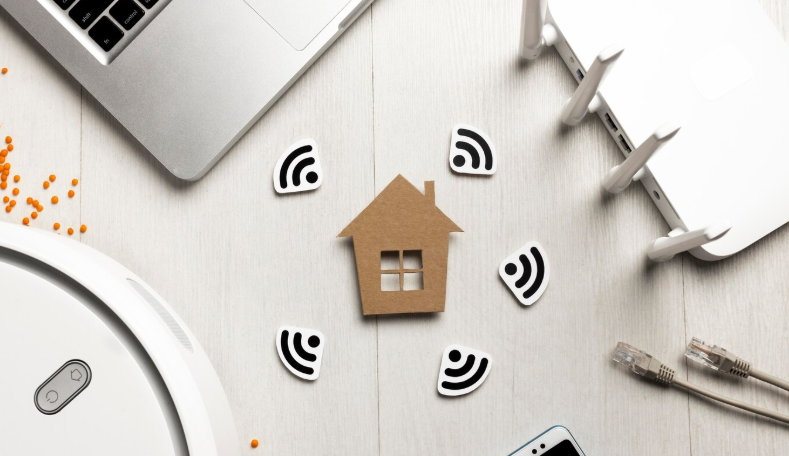In the rapidly evolving world of retail, businesses are continually seeking new ways to enhance customer experiences, streamline operations, and stay ahead of the competition. One such innovation that is making waves is Augmented Reality (AR). AR blends the physical world with digital elements, creating interactive experiences that engage customers in ways never before possible. As this technology becomes more advanced and accessible, its potential in the retail sector is vast. In this article, we will explore how AR is transforming retail, the benefits it offers, and the future possibilities of this exciting technology.
1. What is Augmented Reality (AR)?
Augmented Reality (AR) is a technology that overlays digital information, such as images, sounds, or other sensory stimuli, on top of the physical world in real-time. Unlike Virtual Reality (VR), which creates entirely immersive environments, AR enhances the user’s interaction with the real world by adding digital elements. AR can be experienced through smartphones, tablets, smart glasses, and other AR-enabled devices.
In retail, AR is used to create immersive experiences, assist with product visualization, and offer interactive features that enhance the shopping process. Through AR, customers can see how products will look in their homes, try on clothing virtually, or receive detailed product information in real-time.
2. How AR is Transforming the Retail Experience
a) Virtual Try-Ons
One of the most powerful applications of AR in retail is the virtual try-on experience. AR allows customers to “try on” clothing, accessories, makeup, or eyewear virtually, without the need to physically interact with the products. This is particularly useful for online shopping, where customers cannot physically see or touch the items before purchasing.
- Example: L’Oreal and Sephora have incorporated AR into their beauty apps, allowing users to try makeup virtually by superimposing different products onto their own faces using their smartphones or AR mirrors in-store.
- Impact: Virtual try-ons provide a personalized shopping experience, reduce the likelihood of returns, and increase customer satisfaction by offering a more accurate representation of how the product will look.
b) Product Visualization
AR allows customers to visualize products in their own environment before making a purchase. This is particularly beneficial for big-ticket items like furniture or home décor, where customers may be unsure about how a product will fit or look in their space.
- Example: IKEA‘s IKEA Place app uses AR to let customers visualize how furniture and home décor items will appear in their homes. By simply pointing their smartphone at a room, users can see how various items will look, including their size, color, and style.
- Impact: This AR feature eliminates guesswork, improves purchase confidence, and can lead to higher conversion rates, as customers are more likely to purchase when they can visualize the product in context.
c) Interactive In-Store Experiences
In-store AR experiences are transforming the way customers interact with products in brick-and-mortar stores. Using AR apps or smart glasses, customers can access additional information about products, view promotional content, or even interact with virtual store assistants.
- Example: Nike has used AR in its flagship stores to create interactive experiences where customers can scan products to learn more about their features, access reviews, or receive personalized recommendations based on their preferences and browsing history.
- Impact: In-store AR experiences encourage customers to spend more time in stores, engage more deeply with products, and ultimately, make more informed purchasing decisions.
d) Virtual Store Tours
For e-commerce businesses, AR can be used to provide a virtual tour of a store, allowing customers to explore the space and interact with products from the comfort of their homes. This can replicate the physical shopping experience online, making it easier for customers to navigate and find what they’re looking for.
- Example: Some fashion retailers have developed virtual showrooms where customers can walk through the store, view different clothing items, and even try them on virtually, much like they would in a physical store.
- Impact: Virtual store tours create an immersive, engaging experience for online shoppers, increasing customer loyalty and driving sales.
3. Benefits of AR in Retail
a) Enhanced Customer Engagement
AR creates memorable, interactive experiences that captivate customers. By engaging with products in a more interactive and personalized way, customers are more likely to form emotional connections with the brand, increasing their likelihood of repeat purchases and brand loyalty.
- Impact: AR helps brands stand out in a crowded retail market by providing unique and engaging experiences that resonate with customers on a deeper level.
b) Reduced Product Returns
One of the challenges in retail, especially in e-commerce, is the high rate of returns. AR technology can significantly reduce this problem by allowing customers to better visualize products before purchasing, whether it’s trying on clothes, testing out makeup, or visualizing furniture in their homes.
- Impact: By providing customers with more accurate representations of products, AR helps reduce uncertainty, leading to fewer returns and lower operational costs for retailers.
c) Personalized Shopping Experience
AR allows retailers to offer more personalized experiences tailored to individual customers’ preferences. By integrating AR with AI, data analytics, and customer profiles, brands can provide recommendations, special offers, and targeted advertisements in real-time.
- Impact: Personalization drives customer satisfaction and enhances the likelihood of a purchase, as consumers are more likely to buy products that align with their needs and preferences.
d) Increased Sales and Conversion Rates
With AR’s ability to engage customers and provide a clearer understanding of products, retailers can increase conversion rates and overall sales. By reducing barriers to purchase and enhancing product discovery, AR helps guide customers through the buying journey.
- Impact: AR-driven product visualization, virtual try-ons, and in-store engagement lead to increased conversions and higher average order values.
4. Challenges of Implementing AR in Retail
a) High Initial Costs
Developing and implementing AR technology can be expensive, particularly for smaller retailers. The costs associated with AR app development, hardware (such as AR glasses or interactive displays), and training staff to use the technology can be significant.
- Challenge: While AR can lead to increased sales, the high upfront investment may be a barrier for smaller retailers who do not have the financial resources to implement this technology on a large scale.
b) Technical Limitations
AR experiences often require users to have specific hardware, such as smartphones or AR glasses, to fully engage with the technology. Not all customers may have access to or be familiar with AR-enabled devices, limiting the technology’s reach.
- Challenge: For maximum effectiveness, retailers must ensure that their AR experiences are compatible with a wide range of devices and that the technology is user-friendly and accessible.
c) Consumer Privacy Concerns
As AR experiences often involve the collection of data, such as facial recognition, location tracking, or purchase history, there are potential privacy concerns. Consumers may be wary of sharing personal information or may feel uncomfortable with how their data is used.
- Challenge: Retailers must ensure transparency and proper data protection practices to build trust with customers and ensure compliance with data privacy regulations.
5. The Future of AR in Retail
The potential for AR in retail is vast, and we can expect to see even more innovative applications in the future. Some emerging trends include:
a) Integration with AI and Machine Learning
As AR technology evolves, it will likely become even more personalized. By combining AR with artificial intelligence (AI) and machine learning, retailers will be able to provide real-time, dynamic recommendations based on customer preferences, behaviors, and demographics.
b) AR for Social Shopping
Social commerce is on the rise, and AR can play a major role in this trend. Brands may integrate AR into social media platforms, enabling users to try on products, visualize them in their environment, and share their experiences with friends and followers, all without leaving the app.
c) Advanced AR Shopping Experiences in the Metaverse
As the metaverse becomes more mainstream, AR will play a key role in creating immersive, virtual shopping experiences. Consumers may be able to browse and buy products in digital stores within virtual worlds, with AR enabling them to interact with products and try them on in virtual environments.
6. Conclusion
Augmented Reality is revolutionizing the retail industry, offering customers a more immersive, interactive, and personalized shopping experience. From virtual try-ons and product visualization to in-store engagement and online shopping tours, AR has the potential to significantly enhance how consumers interact with brands and make purchasing decisions. While there are challenges, such as high initial costs and privacy concerns, the long-term benefits of AR in retail—such as increased sales, customer engagement, and reduced returns—make it a valuable tool for businesses looking to stay competitive in an increasingly digital marketplace. As technology continues to evolve, we can expect AR to play an even more central role in shaping the future of retail.


